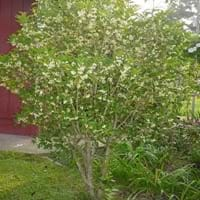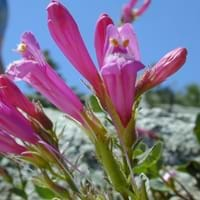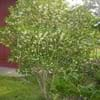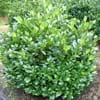Life Span
Perennial
Perennial
Type
Broadleaf Evergreen
Shrub
Origin
Asia, Nepal, China, Japan, Korea
Southwestern United States, Mexico
Types
Apricot Gold, Butter Yellow, Orange Supreme, Dan
Not Available
Habitat
Dappled Shade, Woodland Garden Canopy
Wild
USDA Hardiness Zone
6-11
8-10
AHS Heat Zone
12 - 8
10-8
Sunset Zone
21,22
10, 11, 12, 13
Habit
Upright/Erect
Clump-Forming
Flower Color
White, Orange
Hot Pink
Flower Color Modifier
Bicolor
Bicolor
Fruit Color
Blue, Black
Brown
Leaf Color in Spring
Green, Dark Green
Blue Green, Gray Green
Leaf Color in Summer
Dark Green
Blue Green, Gray Green
Leaf Color in Fall
Dark Green
Blue Green, Gray Green
Leaf Color in Winter
Dark Green
Not Available
Leaf Shape
Oval, Finely Dentate
Lance shaped
Plant Season
Spring, Summer, Fall, Winter
Spring, Winter
Sunlight
Full Sun, Partial Sun, Partial shade
Full Sun
Type of Soil
Clay, Loam, Sand
Sand
The pH of Soil
Acidic, Neutral
Neutral, Alkaline
Soil Drainage
Well drained
Well drained
Bloom Time
Spring, Late Spring, Early Fall, Fall
Early Spring, Spring, Late Spring, Late Winter
Tolerances
Not Available
Not Available
Where to Plant?
Container, Ground, Pot
Container, Ground
How to Plant?
Semi-hardwood cuttings
Seedlings
Plant Maintenance
Medium
Medium
Watering Requirements
Average Water Needs
occasional watering once established
In Summer
Lots of watering
Lots of watering
In Spring
Moderate
Moderate
In Winter
Average Water
Average Water
Soil pH
Acidic, Neutral
Neutral, Alkaline
Soil Type
Clay, Loam, Sand
Sand
Soil Drainage Capacity
Well drained
Well drained
Sun Exposure
Full Sun, Partial Sun, Partial shade
Full Sun
Pruning
Remove no more than one-third of each branch
Remove damaged leaves, Remove dead branches, Remove dead leaves
Fertilizers
All-purpose dry fertilizer
All-Purpose Liquid Fertilizer
Pests and Diseases
No serious insect or disease problems
Red blotch
Plant Tolerance
Drought
Drought
Flower Petal Number
Single
Single
Foliage Texture
Medium
Medium
Foliage Sheen
Glossy
Matte
Attracts
Nematodes
Hummingbirds
Allergy
no allergic reactions
poisonous if ingested
Aesthetic Uses
Beautification, Showy Purposes
Borders, Showy Purposes
Beauty Benefits
Good for skin and hair
Not Available
Environmental Uses
Air purification
Air purification
Medicinal Uses
Antitussive
constipation, Stomach pain, Swelling, Wounds
Part of Plant Used
Bark, Flowers, Fruits, Stem
Flowers, Leaves, Stem
Other Uses
Used as essential oil, Used as insect repellent, Used in herbal medicines, Used in tea, wine and sweet dishes
Showy Purposes, Used as Ornamental plant
Used As Indoor Plant
Yes
Yes
Used As Outdoor Plant
Yes
Yes
Garden Design
Container, Feature Plant, Hedges, Houseplant, Mixed Border, Screening, Wind Break, Topiary, Bonsai, Espalier
Cutflower, Mixed Border, Rock Garden / Wall, Wildflower
Botanical Name
OSMANTHUS fragrans
PENSTEMON parryi
Common Name
Sweet olive, Sweet osmanthus, Tea olive
Parry's Beardtongue
In Hindi
Sweet Olive
penstemon parryi
In German
Sweet Olive
penstemon parryi
In French
Olive douce
penstemon parryi
In Spanish
Oliva dulce
parryi penstemon
In Greek
γλυκό Ελιά
penstemon parryi
In Portuguese
Olive doce
parryi penstemon
In Polish
słodki Olive
penstemon parryi
In Latin
Dulce Olive
Persicaria californicum
Phylum
Magnoliophyta
Magnoliophyta
Class
Magnoliopsida
Magnoliopsida
Order
Scrophulariales
Lamiales
Family
Oleaceae
Scrophulariaceae
Genus
Osmanthus
Penstemon
Clade
Angiosperms, Asterids, Eudicots
Angiosperms, Asterids, Eudicots
Tribe
Oleeae
Not Available
Subfamily
Not Available
Not Available
Number of Species
Not Available
Properties of Sweet Olive and Penstemon Parryi
Wondering what are the properties of Sweet Olive and Penstemon Parryi? We provide you with everything About Sweet Olive and Penstemon Parryi. Sweet Olive doesn't have thorns and Penstemon Parryi doesn't have thorns. Also Sweet Olive does not have fragrant flowers. Sweet Olive has allergic reactions like no allergic reactions and Penstemon Parryi has allergic reactions like no allergic reactions. Compare all the properties and characteristics of these two plants. Find out which of these plant can be used as indoor plant. If you are interested to decorate your house and garden, find out aesthetic uses, compare them and select the plant which will beautify your surrounding. Along with beautification, try comparing medicinal and edible uses of Sweet Olive and Penstemon Parryi and you can choose the plant having best and most benefits.
Season and Care of Sweet Olive and Penstemon Parryi
Season and care of Sweet Olive and Penstemon Parryi is important to know. While considering everything about Sweet Olive and Penstemon Parryi Care, growing season is an essential factor. Sweet Olive season is Spring, Summer, Fall and Winter and Penstemon Parryi season is Spring, Summer, Fall and Winter. The type of soil for Sweet Olive is Clay, Loam, Sand and for Penstemon Parryi is Sand while the PH of soil for Sweet Olive is Acidic, Neutral and for Penstemon Parryi is Neutral, Alkaline.
Sweet Olive and Penstemon Parryi Physical Information
Sweet Olive and Penstemon Parryi physical information is very important for comparison. Sweet Olive height is 30.00 cm and width 180.00 cm whereas Penstemon Parryi height is 90.00 cm and width 5.10 cm. The color specification of Sweet Olive and Penstemon Parryi are as follows:
Sweet Olive flower color: White and Orange
Sweet Olive leaf color: Green and Dark Green
Penstemon Parryi flower color: Hot Pink
- Penstemon Parryi leaf color: Blue Green and Gray Green
Care of Sweet Olive and Penstemon Parryi
Care of Sweet Olive and Penstemon Parryi include pruning, fertilizers, watering etc. Sweet Olive pruning is done Remove no more than one-third of each branch and Penstemon Parryi pruning is done Remove damaged leaves, Remove dead branches and Remove dead leaves. In summer Sweet Olive needs Lots of watering and in winter, it needs Average Water. Whereas, in summer Penstemon Parryi needs Lots of watering and in winter, it needs Average Water.





